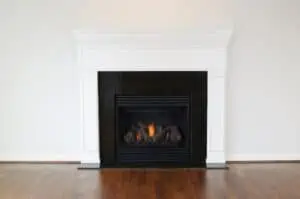How to Do Fireplace Maintenance?
Before beginning any work on your fireplace, be sure to gather the necessary materials. Having them all ready will save you time and effort. Also, turn off the gas to avoid escaping gas. This is important because it can be dangerous. If you have any questions or are unsure of what you need to do, consult the owner’s manual.
(For electric fireplace maintenance, contact us today!)

Wood-burning vs. gas-burning fireplaces
Choosing between a wood-burning and a gas-burning fireplace is a tough decision. While the former is more environmentally friendly, gas fireplaces use propane gas and tend to be more expensive. Gas fireplaces can also be more difficult to install, and they don’t offer the same ambiance as a wood fireplace. However, if you’re only planning on using your fireplace a few times per year, a gas fireplace may be more cost-effective than a wood fireplace.
In terms of convenience, gas fireplaces are the most convenient. The reason is that you don’t have to keep wood in your fireplace. Besides, gas fireplaces can save you money on energy bills. Wood-burning fireplaces, on the other hand, require a lot of work to maintain. The wood that is burned depends on the type of fuel, so you should consider these factors when making your decision.
Cleaning
Cleaning your fireplace is an important part of fireplace maintenance. It’s important to use the proper tools to get the job done right. You’ll need a hand broom or a dry bristle brush, and you’ll need to remove any ashes and debris before you start cleaning. Be sure to put the debris and ashes in a paper bag so you can dispose of them safely. Also, be sure to vacuum the area you’re cleaning thoroughly. Using a TSP (trisodium phosphate) cleaning solution can help you clean the surfaces of the fireplace without damaging them.
The first step in cleaning your fireplace is to remove the ashes and dust from the grate and glass front. You’ll also need to clean any decorative logs or lava rocks. These should be cleaned regularly with a damp cloth. You’ll also need to wipe down the grate and trim with a microfiber cloth to get rid of dust.
Repairs
Fireplace repairs may be needed for several reasons. Damaged bricks and tiles in a fireplace may need replacement or cleaning. Cracks and leaks may be caused by faulty gas valves. Signs of a malfunctioning gas valve include strange sounds, pilot light problems, and a foul odor.
In some cases, repairs for a fireplace are easy, but in more severe cases, the entire firebox may need to be replaced. These repairs may require a professional to perform the work.
Replacement bulbs
The first step in replacing bulbs in a fireplace is to locate the light bulbs. Most fireplaces have the bulbs near the rear panel, accessible by removing the front panel and unscrewing the screws. Wear gloves to avoid getting oil on your hands when you are working with the light bulbs. Remove the old bulb and insert the new one. Make sure to allow the new bulb to cool before reinstalling it.
If you have an electric fireplace, you should replace the bulbs regularly. The bulbs should last for at least two years. It is important to check the owner’s manual to find out which bulb type your fireplace uses. Halogen bulbs, for instance, need to be handled with gloves to prevent skin oils from deteriorating the bulbs. LED bulbs, on the other hand, should not need replacement at all.

